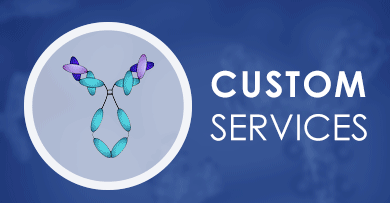 Loading...
Loading...

CRTAM
 Loading...
Loading...Anti-CRTAM Products
- Mouse Anti-CRTAM Recombinant Antibody (clone 17B2) (HPAB-1089-FY)
-
- Derivation: Chimeric (hamster/mouse)
- Species Reactivity: Human
- Type: Mouse IgG
- Application: WB, FC
-
- Species Reactivity: Human
- Type: Mouse antibody
- Application: FC, WB
- Human Anti-CRTAM Recombinant Antibody (VS-0723-WK71) (VS-0723-WK71)
-
- Derivation: Chimeric (rabbit/human)
- Species Reactivity: Human
- Type: Chimeric (rabbit/human) IgG1
- Application: FC
- Human Anti-CRTAM Recombinant Antibody (VS-0723-WK81) (VS-0723-WK81)
-
- Derivation: Chimeric (rabbit/human)
- Species Reactivity: Human
- Type: Chimeric (rabbit/human) IgG1
- Application: FC
- Hamster Anti-CRTAM Recombinant Antibody (clone 17B2); scFv Fragment (HPAB-1089-FY-F(E))
-
- Species Reactivity: Human
- Type: Hamster scFv
- Application: WB, FC
- Mouse Anti-CRTAM Recombinant Antibody (clone 17B2); Fab Fragment (HPAB-1089-FY-S(P))
-
- Derivation: Chimeric (hamster/mouse)
- Species Reactivity: Human
- Type: Chimeric(hamster/mouse) Fab
- Application: WB, FC
-
- Derivation: Phage display library
- Species Reactivity: Human
- Type: Rabbit IgG
- Application: WB, IP
-
- Species Reactivity: Human
- Type: Mouse IgG2a, kappa
- Application: FC
-
- Species Reactivity: Human
- Target: CRTAM
- Host Animal: Mouse
- Application: ELISA, FC, Cell-uptake
Can't find the products you're looking for? Try to filter in the left sidebar.Filter By Tag
Our customer service representatives are available 24 hours a day, from Monday to Sunday. Contact Us
For Research Use Only. Not For Clinical Use.
Background
CD markers
Membrane
Group enriched (dendritic cells, T-cells, Plasma cells)
Immune cell enhanced (NK-cell)
Cell line enriched (SCLC-21H)
Monomer (PubMed:23583034). May form homodimer (via Ig-like V-type domain) (PubMed:23583034, PubMed:23871486). Interacts (via Ig-like V-type domain) with CADM1 (via Ig-like V-type domain); the interaction competes with CRTAM homodimerization and CADM1 homodimerization (PubMed:15781451, PubMed:15811952, PubMed:23871486). Interacts (via PDZ-binding motif) with SCRIB (via PDZ domain 3); the interaction promotes CRTAM and SCRIB polarization in a subset of CD4+ T-cells (By similarity).



